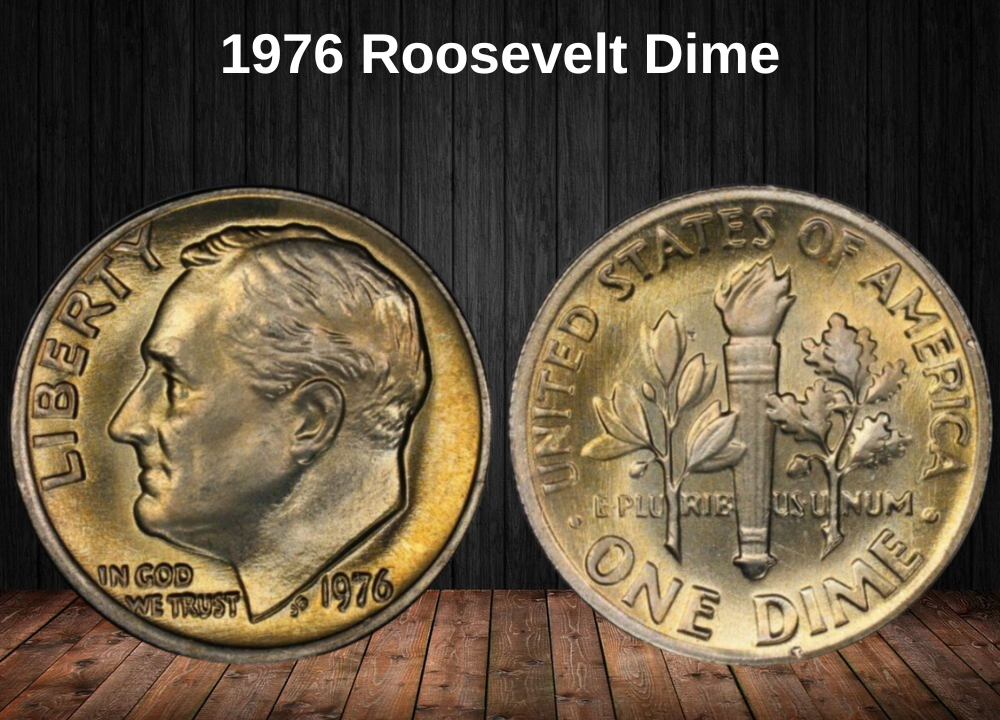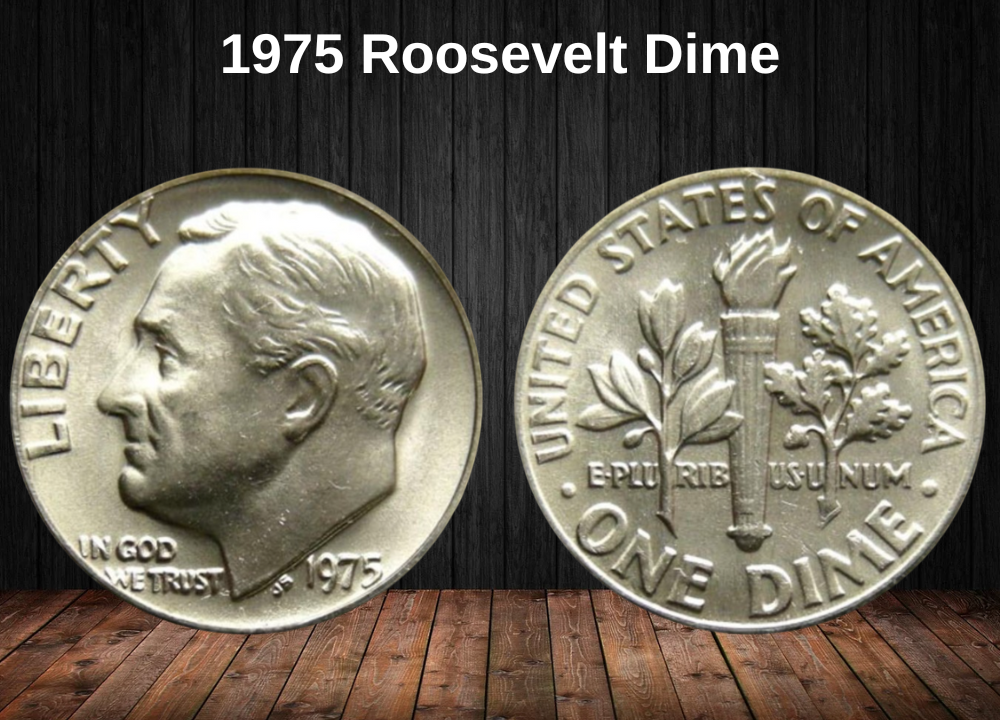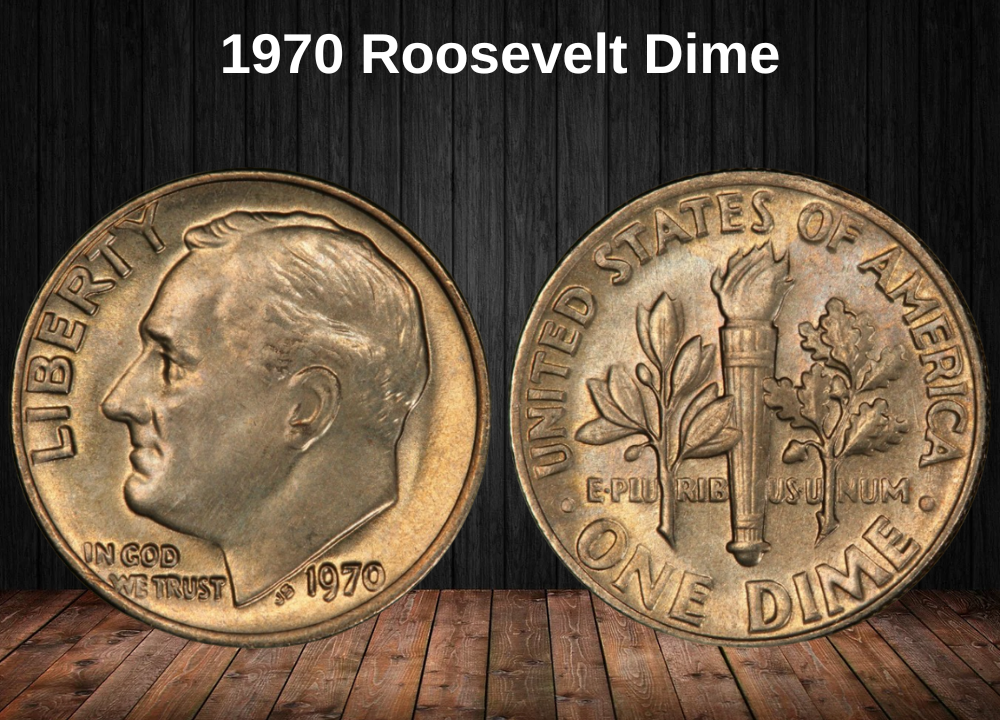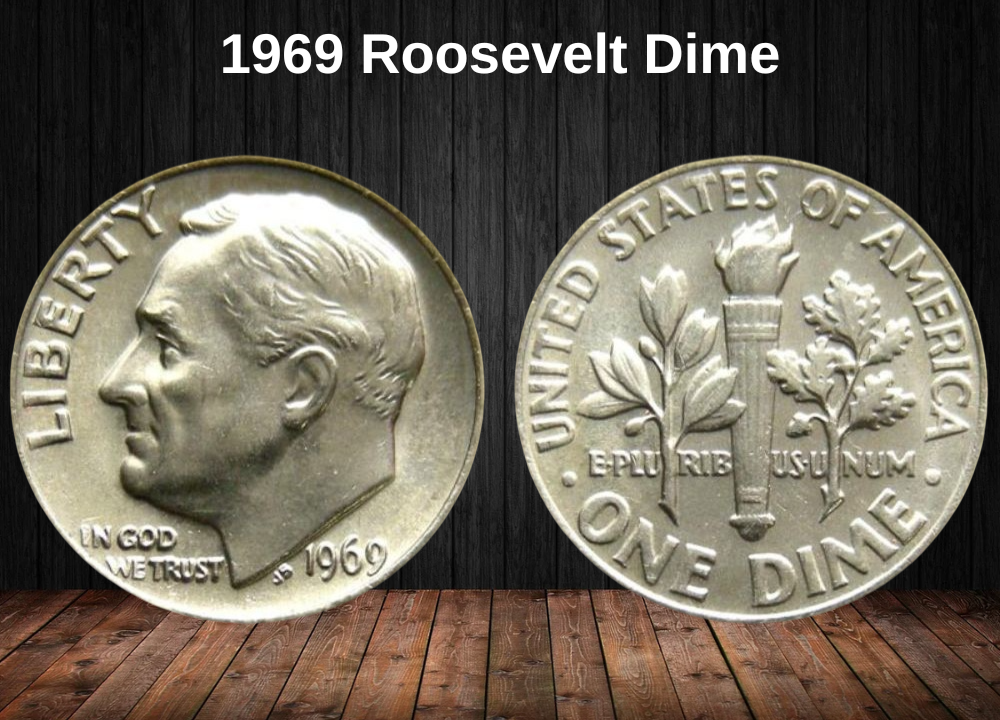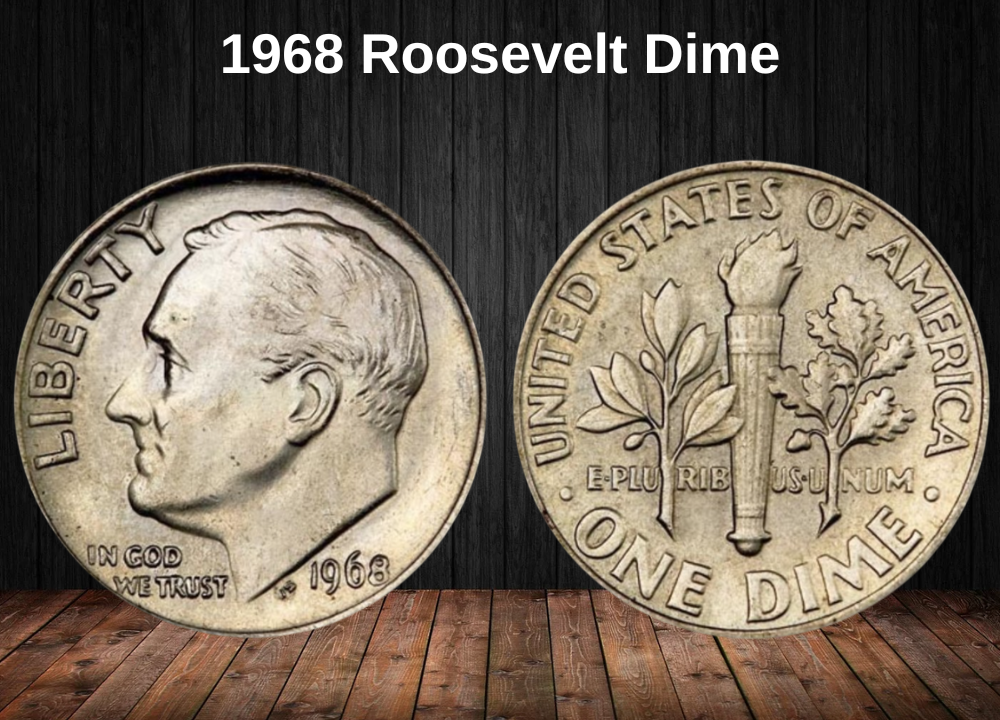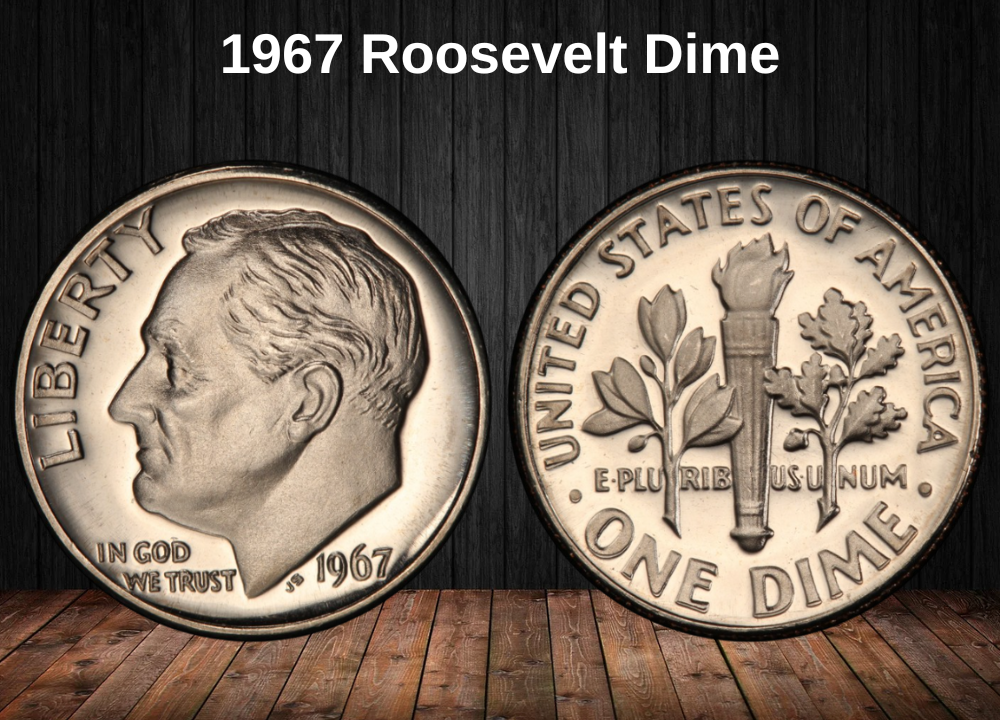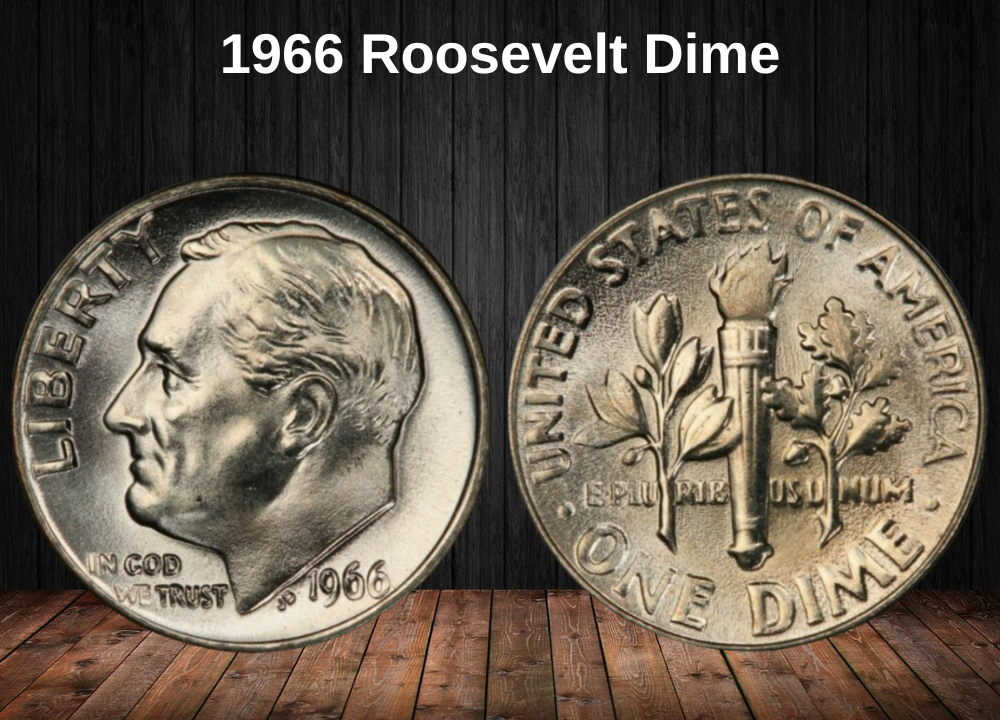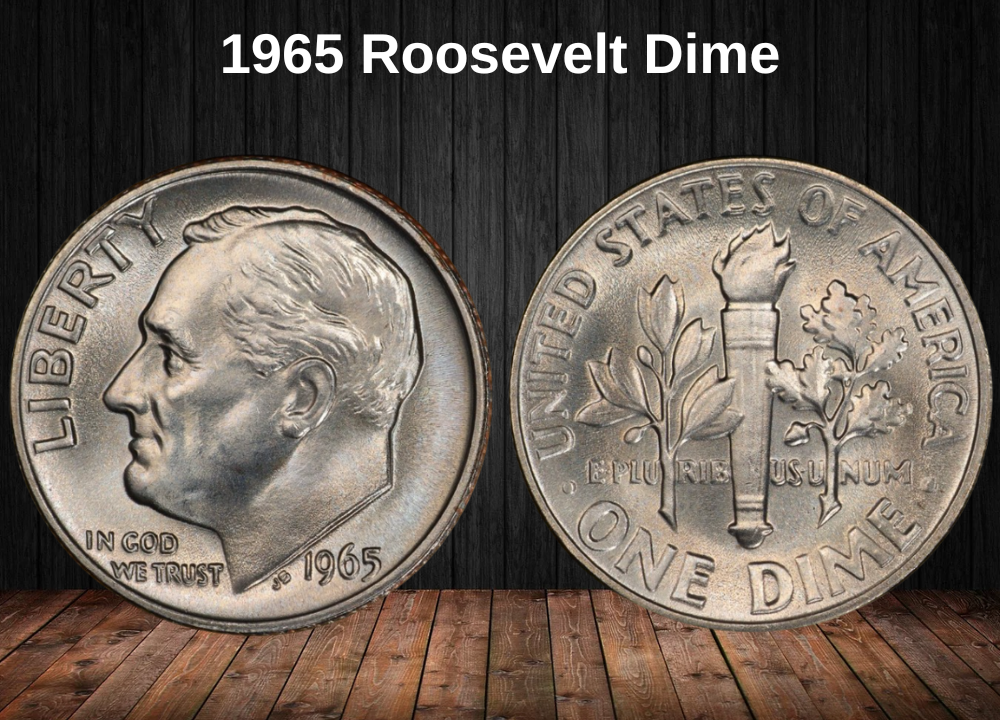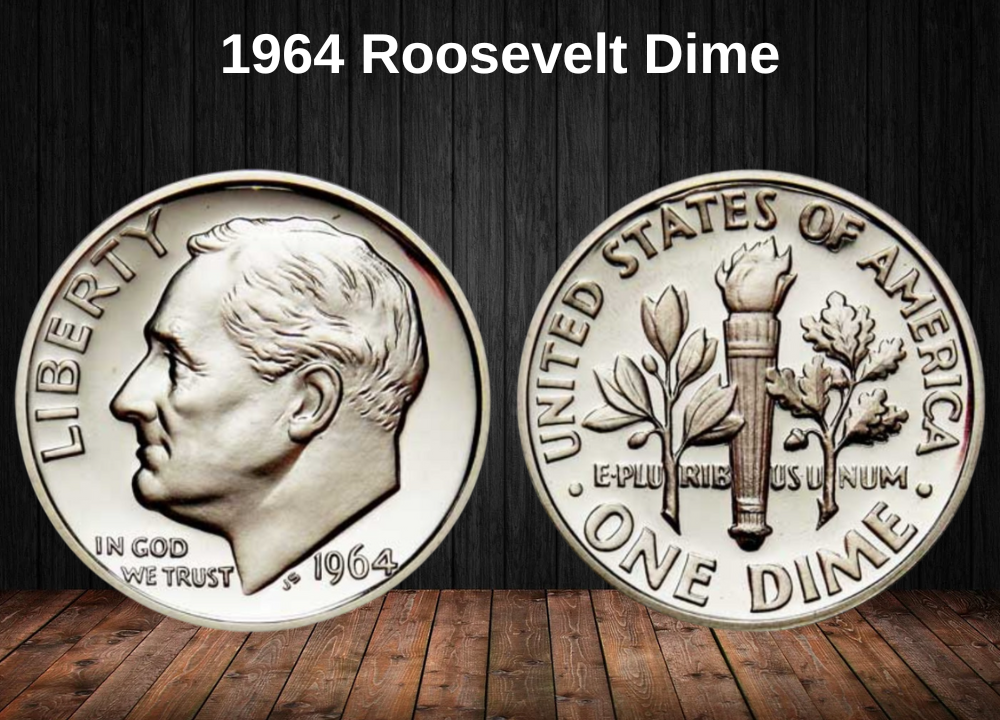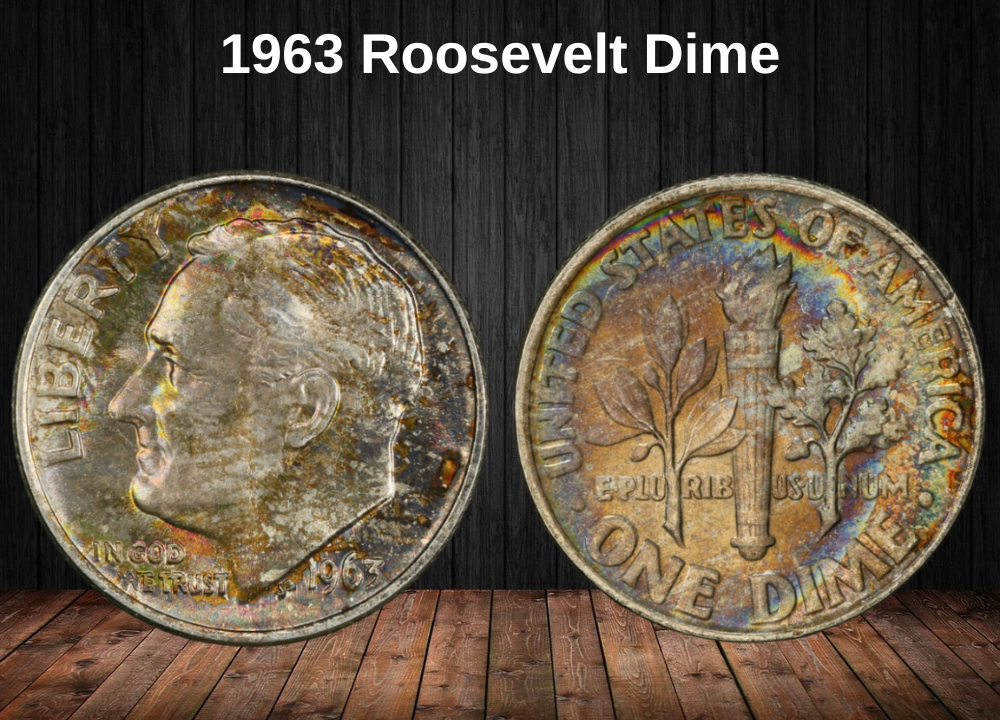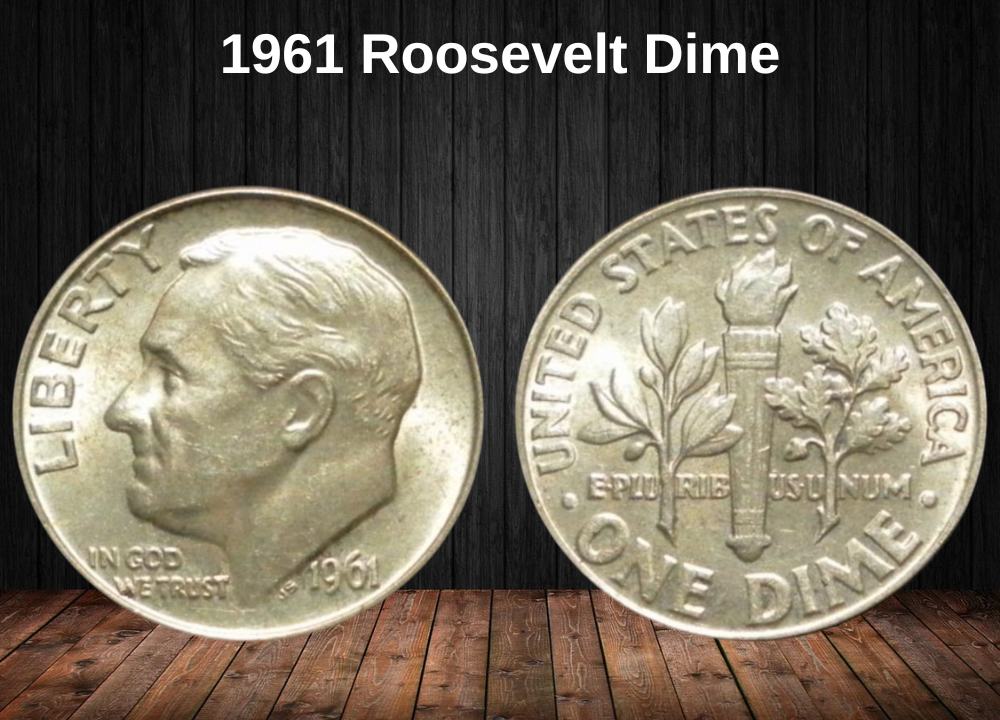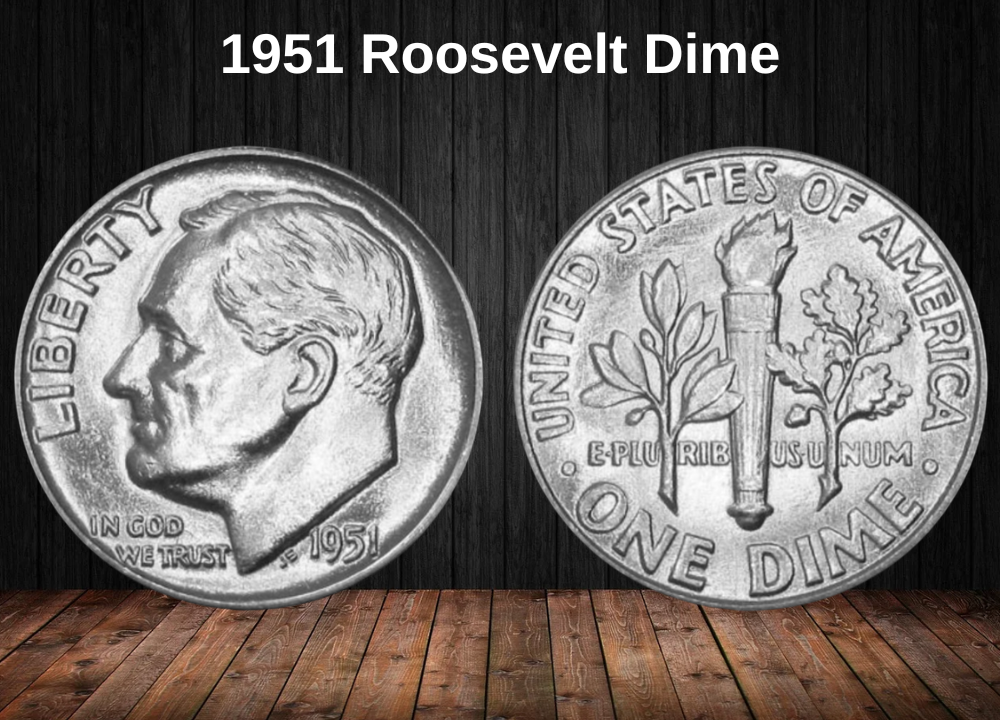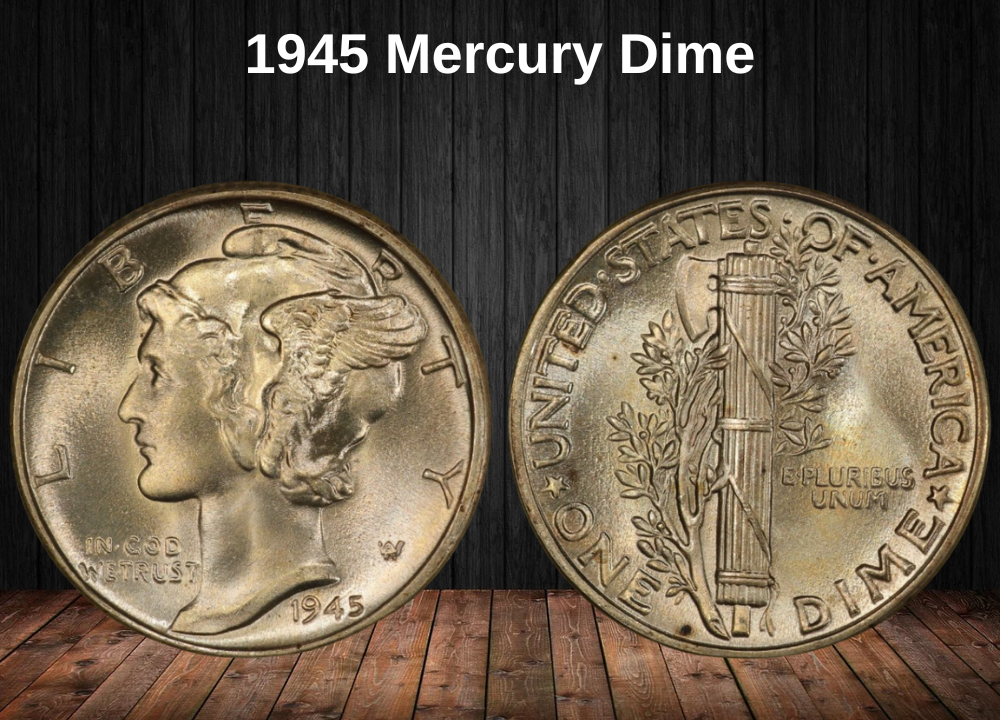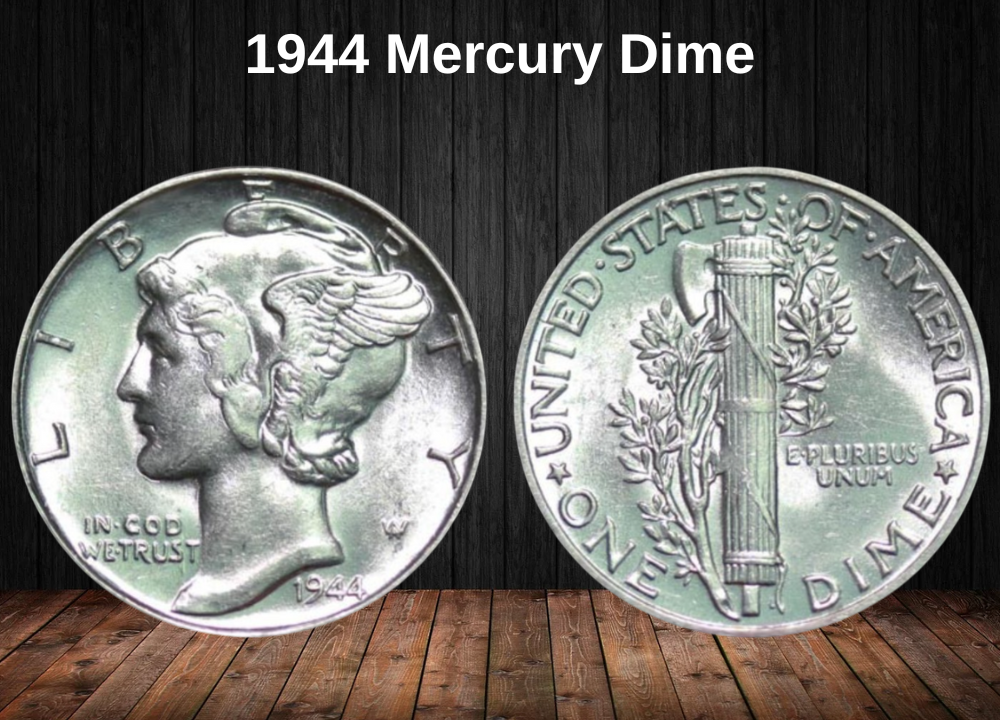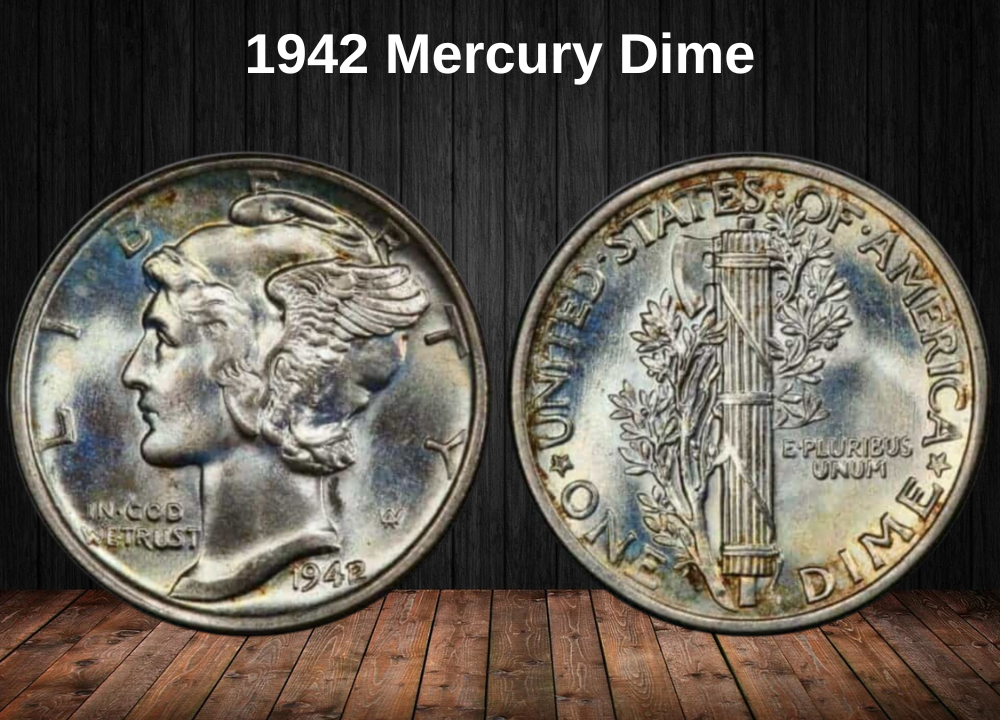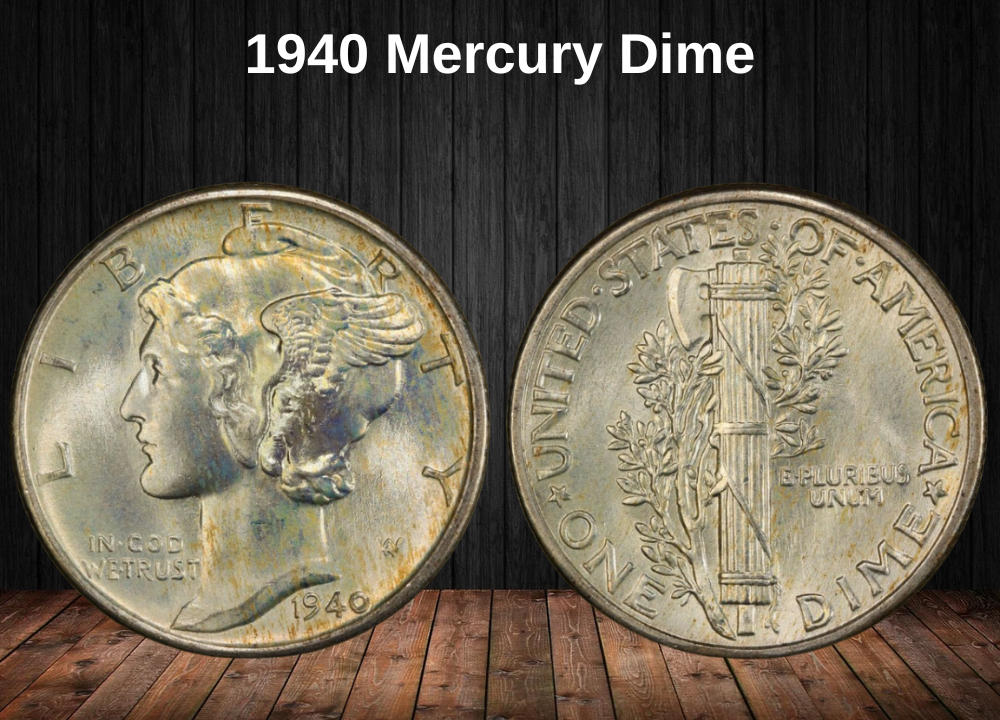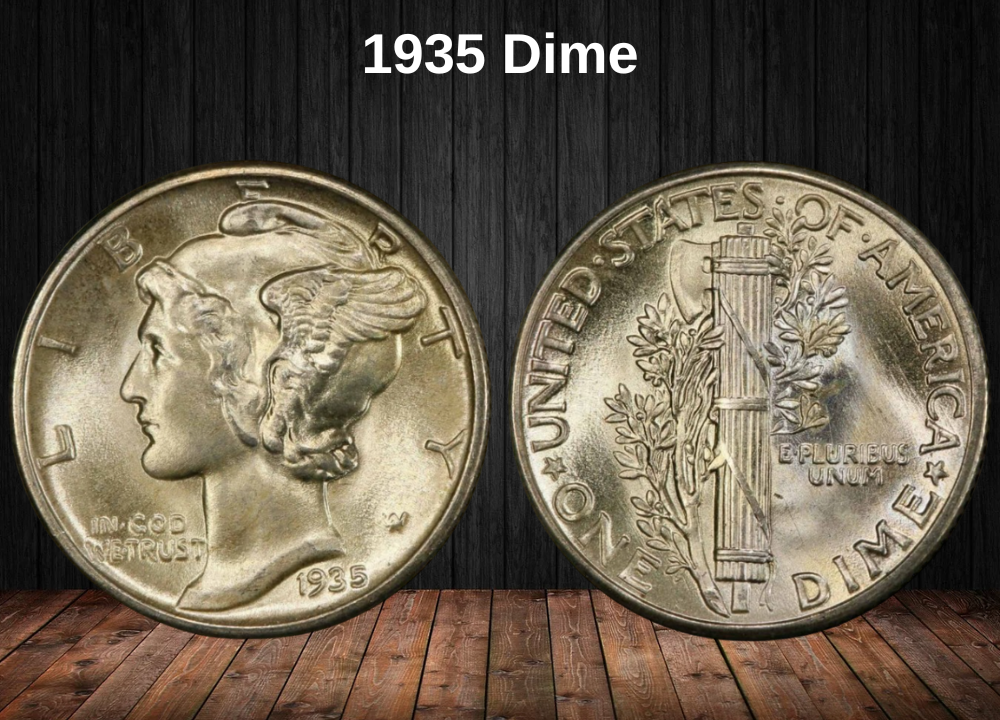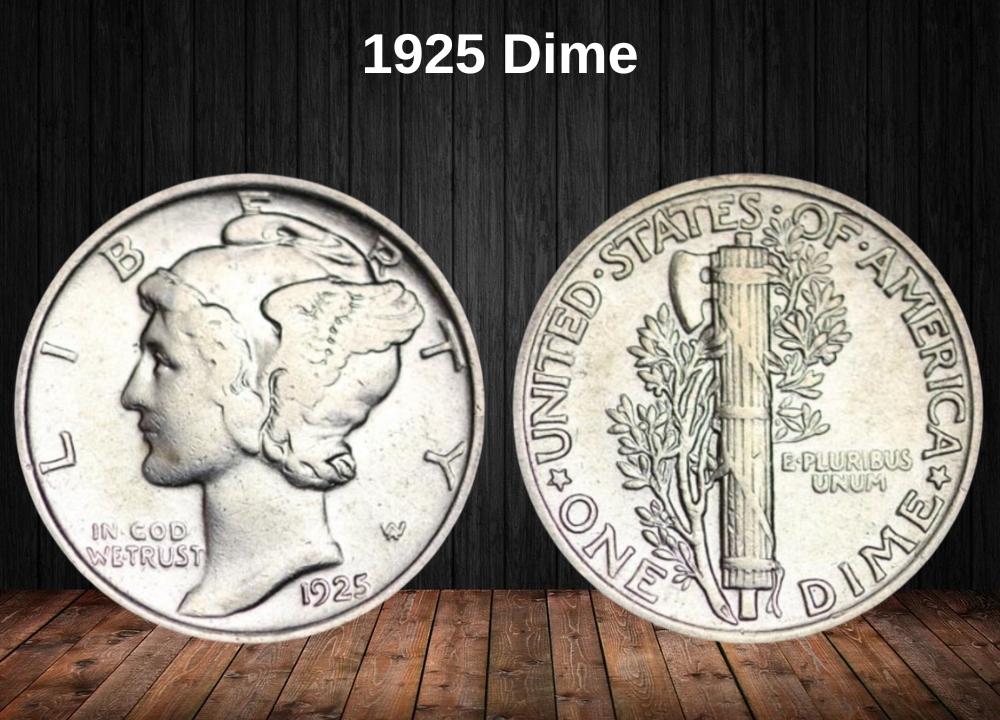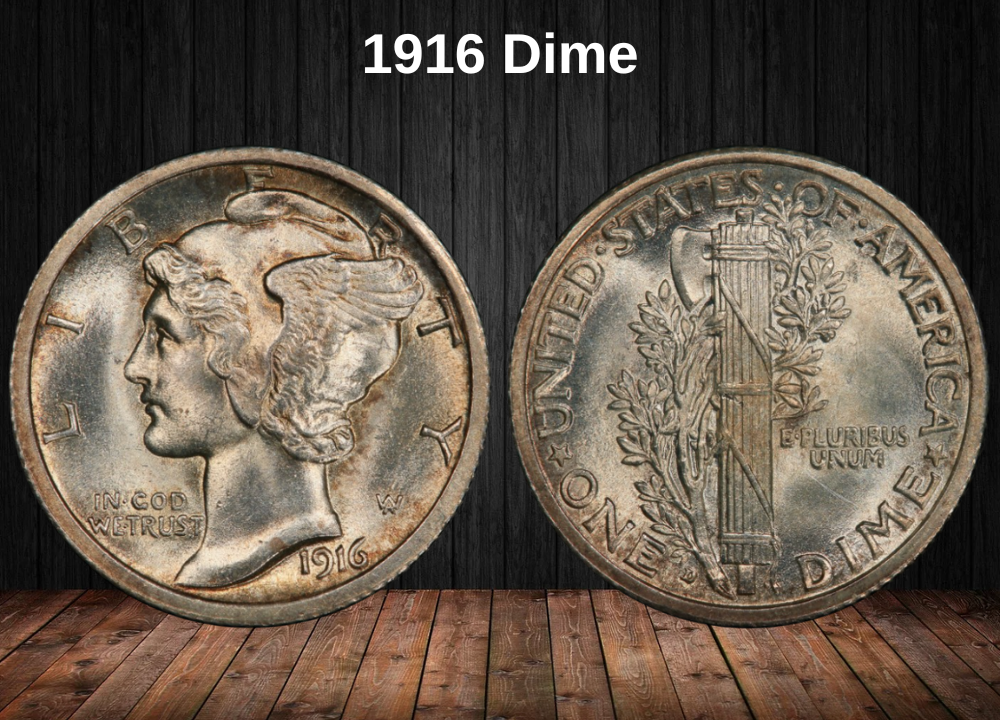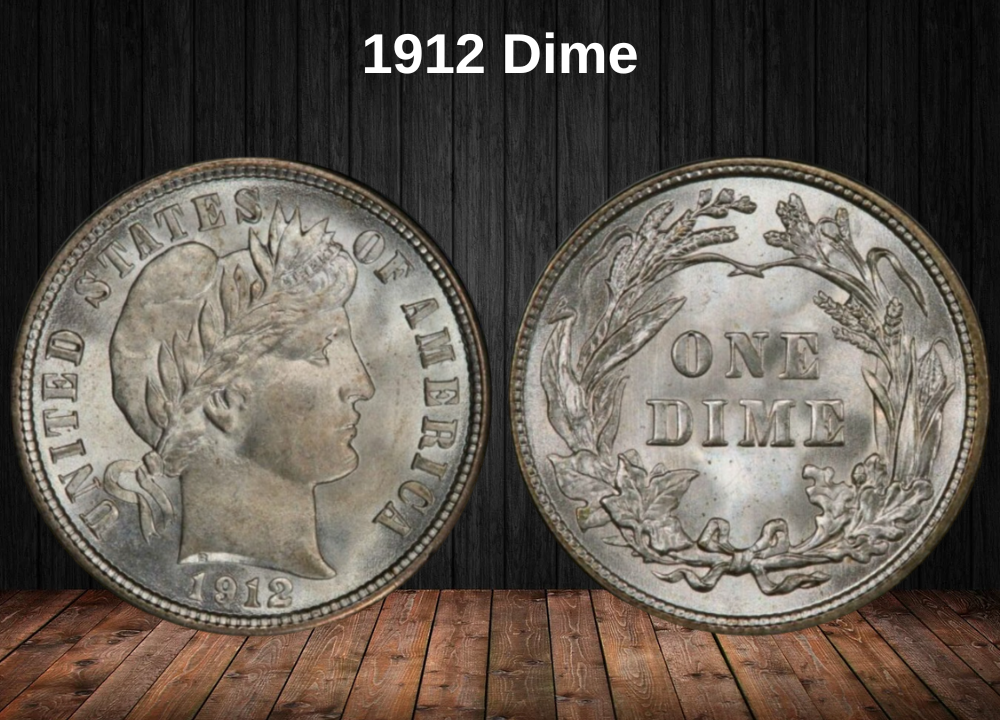The 1936 Mercury Dime, officially called the Winged Liberty Head Dime, is a beloved piece among collectors due to its timeless design and silver content. While most circulated examples are worth only a few dollars over melt value, uncirculated coins, proofs, and especially Full Band specimens can command significantly higher prices.
One of the main attractions of the 1936 dime is its variety. Collectors can choose from Philadelphia (no mint mark), Denver (“D”), and San Francisco (“S”) mint strikes. Additionally, error coins and proof issues add extra intrigue to this year’s mintage.
1936 Mercury Dime Value by Condition
| Condition | 1936 No Mint Mark | 1936 S Dime | 1936 D Dime |
|---|---|---|---|
| Good | $3.41 | $3.41 | $3.41 |
| Very Good | $4.00 | $4.00 | $4.00 |
| Fine | $4.55 | $4.55 | $4.55 |
| Very Fine | $4.81 | $4.81 | $4.81 |
| Extra Fine | $5.10 | $5.10 | $8.40 |
| AU 50 | $7.92 | $16 | $18 |
| MS 60 | $13 | $29 | $31 |
| MS 65 | $38 | $46 | $69 |
| PR 65 | $1,217 | — | — |
History of the 1936 Mercury Dime
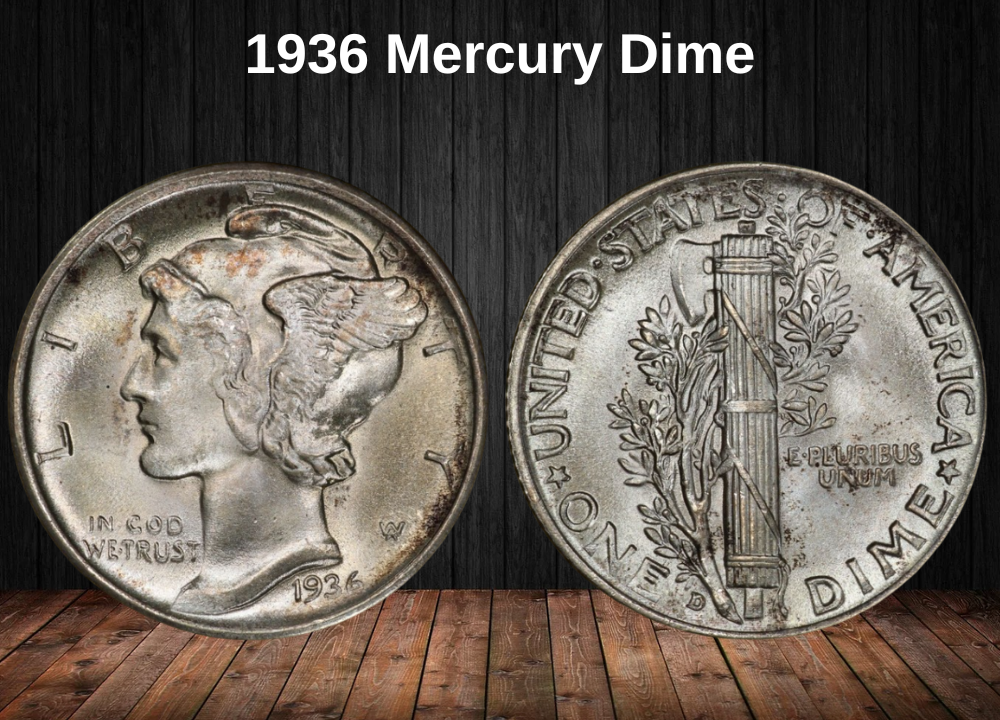
The 1936 Mercury Dime, part of Adolph A. Weinman’s Winged Liberty Head series, was struck during a period of gradual economic recovery from the Great Depression. Over 87 million pieces were minted across Philadelphia, Denver, and San Francisco, making it one of the more common issues in the series.
Collectors prize this coin not only for its 90% silver content but also for its artistry—Lady Liberty in her winged cap symbolizing freedom of thought, and the fasces with olive branch on the reverse representing both strength and peace.
1936 is also notable as the first year the U.S. Mint resumed producing proof coins after a two-decade pause. Proof Mercury dimes from this year are highly collectible, especially cameo examples with sharp contrast. While circulated pieces remain affordable, Full Band strikes and proof issues stand out as valuable highlights from this year’s production.
Features of the 1936 Mercury Dime
The 1936 Mercury Dime, officially known as the Winged Liberty Head Dime, was designed by Adolph A. Weinman, one of the foremost sculptors of early 20th-century American coinage. Introduced in 1916 to replace the Barber Dime, the Mercury Dime series ran until 1945 and is still admired as one of the most elegant designs ever issued by the U.S. Mint.
Obverse of the 1936 Dime
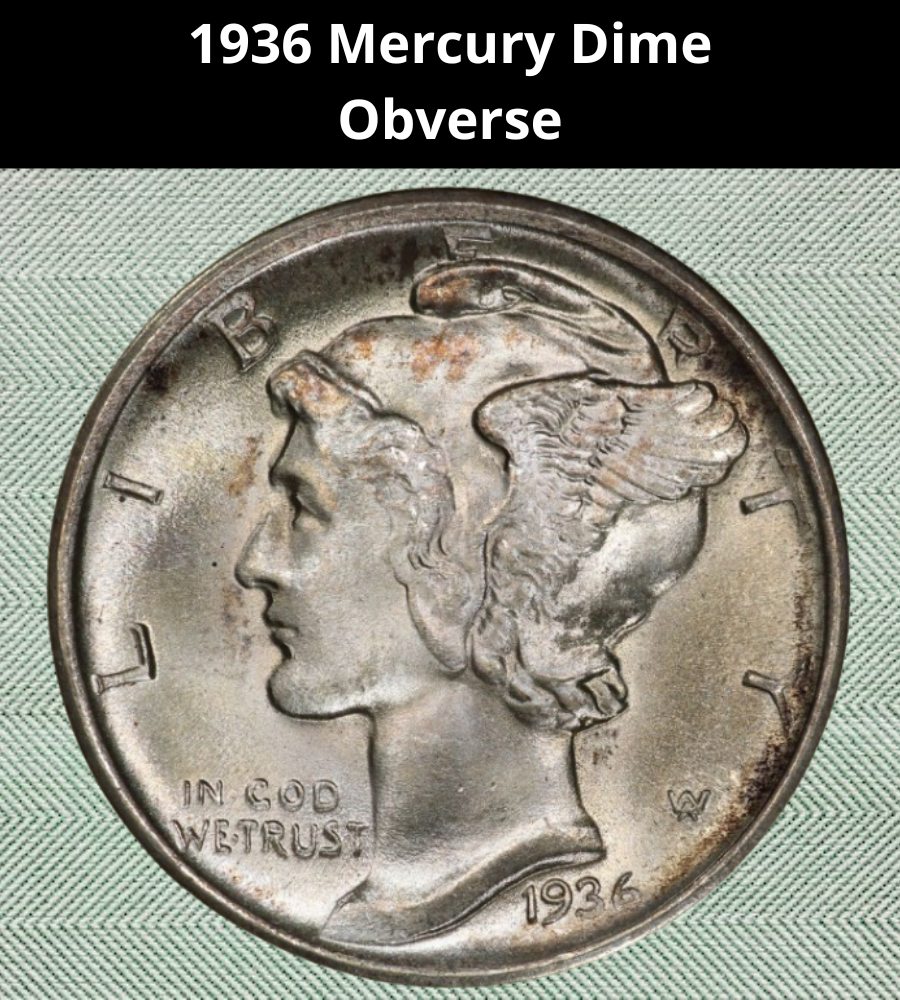
The obverse features Lady Liberty facing left, wearing a winged Phrygian cap symbolizing freedom of thought. Because of its resemblance to the Roman god Mercury, the coin quickly became known as the “Mercury Dime.”
The inscriptions on the obverse include:
- LIBERTY across the upper rim
- IN GOD WE TRUST to the left of Liberty’s neck
- The date 1936 at the lower right
- The designer’s initials AW near Liberty’s neck
Reverse of the 1936 Dime
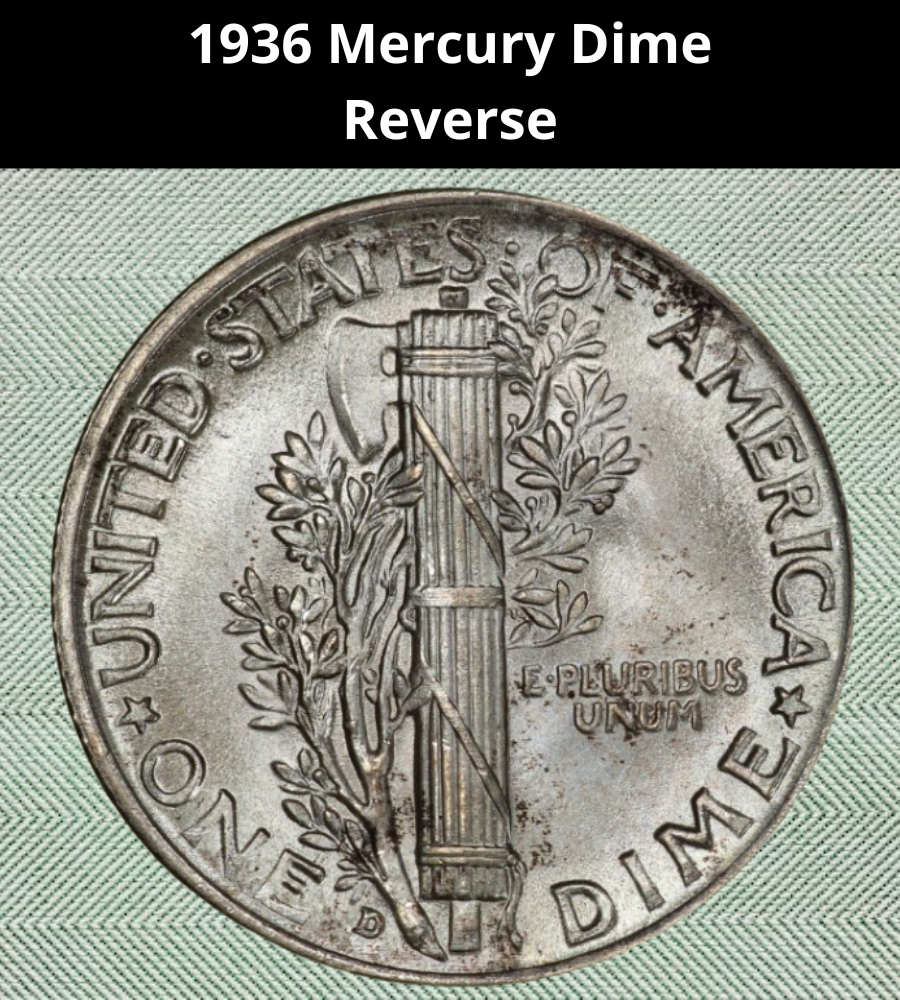
The reverse depicts a fasces—a bundle of rods bound together—representing unity and strength, paired with an olive branch symbolizing peace. This imagery reflected America’s resilience and pursuit of harmony during the 1930s.
The inscriptions on the reverse include:
- UNITED STATES OF AMERICA along the upper rim
- E PLURIBUS UNUM to the right of the fasces
- ONE DIME at the bottom
- The mint mark (D for Denver, S for San Francisco, or blank for Philadelphia) positioned to the right of the “E” in “ONE”
1936 Dime Specifications
- Face Value: $0.10 (ten cents)
- Shape: Round
- Composition: 90% silver, 10% copper
- Type: Standard circulation coin
- Diameter: 17.91 mm (0.705 in)
- Weight: 2.50 g (0.08038 troy oz)
- Silver Weight: 2.25 g (0.07234 troy oz)
- Minting Technique: Milled
- Thickness: 1.35 mm (0.053 in)
- Edge: Reeded
Special Notes on the 1936 Dime
The 1936 issue is notable because it was the first year the U.S. Mint resumed striking proof coins after a long hiatus since 1916. These proof Mercury dimes are highly prized, especially cameo examples with strong contrast. While circulation strikes are relatively common, Full Bands specimens with fully defined lines across the fasces remain especially desirable among collectors.
1936 Dime Grading
Like all U.S. coins, the 1936 Mercury Dime is evaluated using the Sheldon Grading Scale, which ranges from 1 to 70. This system provides a standardized way for collectors and numismatists to determine both the condition and the value of a coin.
Low Grades (1–4)
Coins in Poor or Fair condition are extremely worn, with most design elements almost completely faded. Only the outline of Liberty’s head or parts of the fasces may remain visible. These coins are generally worth only melt value.
Good to Fine (6–20)
In Good, Very Good, or Fine grades, the basic outlines of Liberty’s profile and the fasces are visible. However, major details such as hair lines and the bands on the fasces are faint or missing.
Very Fine to Extremely Fine (20–40)
Coins in this range retain more visible details. Very Fine (20–30) examples show defined hair curls and parts of the winged cap, while Extremely Fine (40) dimes display clear separation in Liberty’s hair and sharper edges in the fasces and olive branch.
About Uncirculated (50–59)
AU coins show very light wear on the highest points of the design, such as Liberty’s cheek and the upper bands of the fasces. Most of the mint luster is still intact, making these attractive to collectors.
Mint State (60–70)
Uncirculated examples have no wear, though they may have minor bag marks or weak luster at MS60. By MS65, the strike is strong, details are sharp, and eye appeal is excellent. Full Bands (FB) specimens with complete horizontal lines on the fasces are especially prized. An MS70 coin would be flawless, though no Mercury Dimes are known at this grade.
1936 Dime Grading Scale Reference
| Grade | Description |
|---|---|
| 1 | Basal State |
| 2 | Fair |
| 3 | Very Fair |
| 4–6 | Good |
| 7–10 | Very Good |
| 12–15 | Fine |
| 20–30 | Very Fine |
| 40 | Extremely Fine |
| 50 | About Uncirculated |
| 60 | Mint State (Uncirculated) |
| 65 | Choice Mint State |
| 70 | Perfect Mint State |
1936 Mercury Dime Value Guides
In 1936, the U.S. Mint struck 112,846,130 Mercury Dimes across three facilities: Philadelphia, Denver, and San Francisco. Collectors recognize four main types today: the no-mintmark issue, the Denver issue, the San Francisco issue, and the special Proof strikes.
1936 No Mint Mark Mercury Dime Value
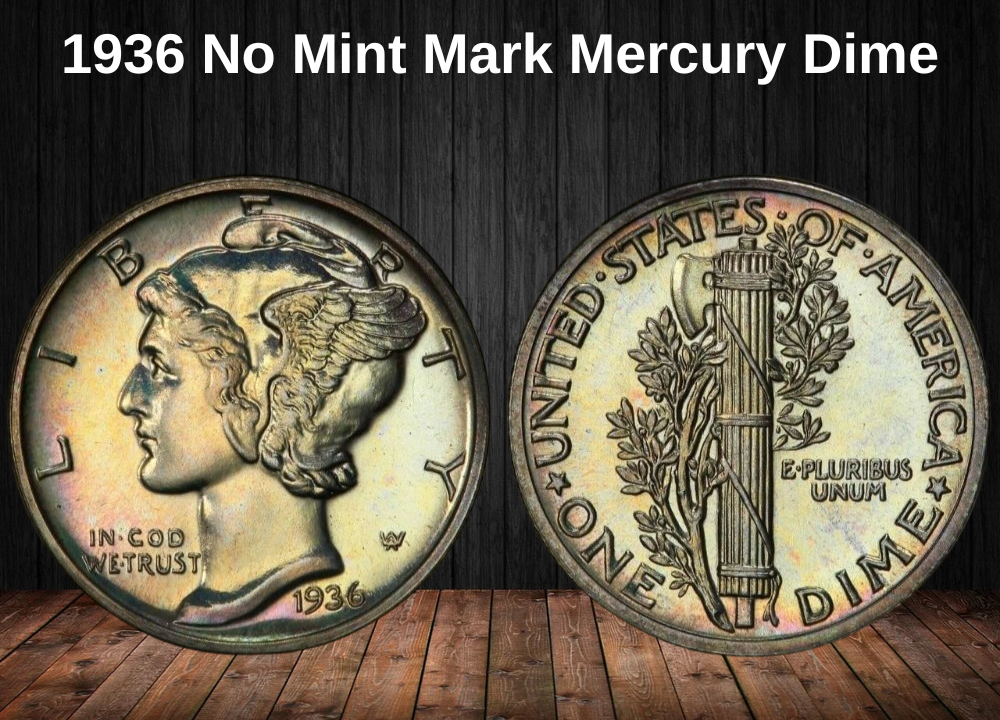
The Philadelphia Mint produced 87,500,000 dimes without a mintmark in 1936.
- Circulated examples generally sell for $3.20 to $3.95.
- Mint State pieces range from $10 to $110, with MS67 coins valued around $110 and MS68 examples reaching $1,150.
Full Bands (FB) Varieties command much higher premiums:
- MS61 FB → $30
- MS62 FB → $35
- MS63 FB → $45
- MS64 FB → $60
- MS65 FB → $125
- MS66 FB → $210
- MS67 FB → $450
- MS68 FB → $15,000
1936 Proof Mercury Dime Value
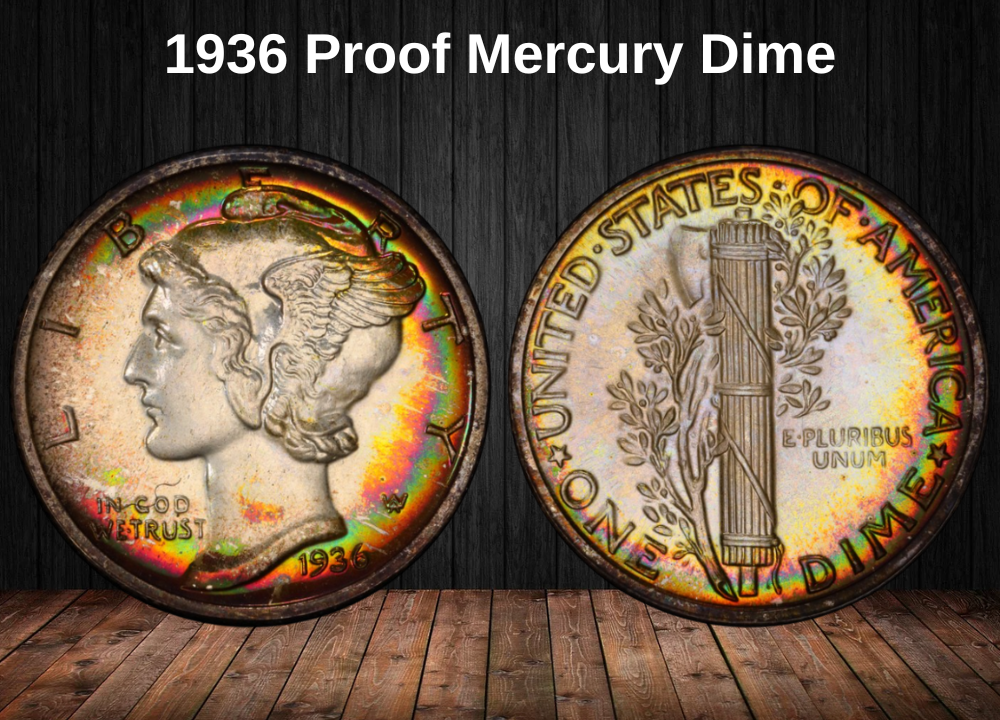
Philadelphia also struck 4,130 Proof dimes in 1936 — the first year of Proof Mercury Dime production.
- PR60–PR64: $725 to $950
- PR65: $1,150
- PR66: $1,750
- PR67: $3,750
- PR68: $37,500
Because of their rarity and beauty, Proofs are among the most sought-after Mercury Dimes.
1936 D Mercury Dime Value
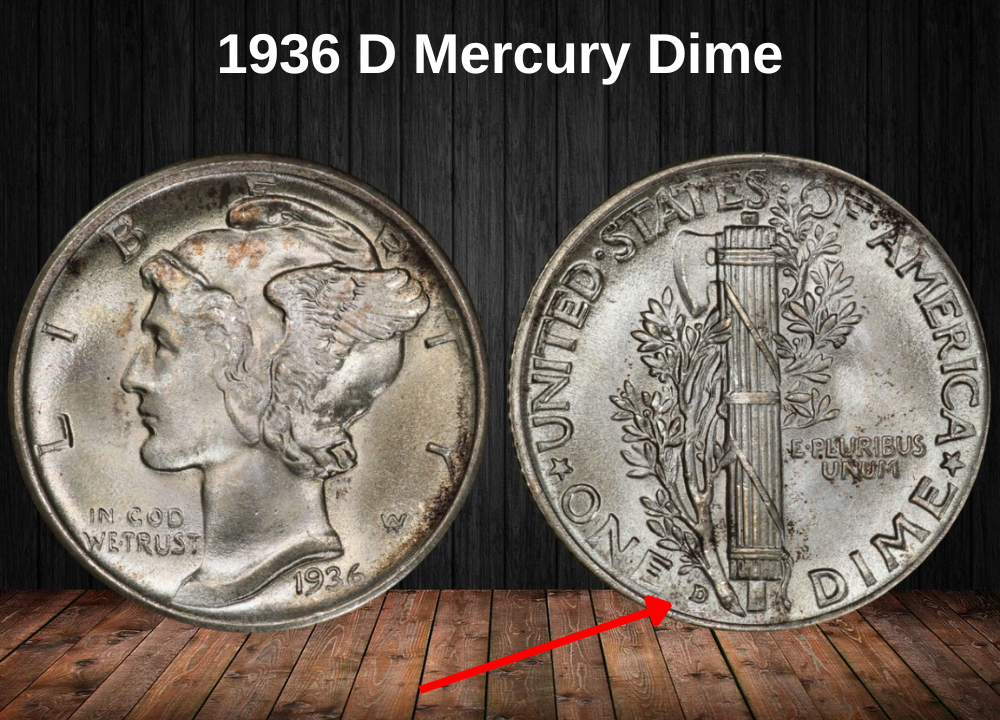
The Denver Mint produced 16,132,000 dimes in 1936.
- Circulated coins range from $3.25 to $21.
- Mint State examples bring:
- MS60 → $35
- MS61 → $40
- MS62 → $45
- MS63 → $55
- MS64 → $70
- MS65 → $90
- MS66 → $135
- MS67 → $360
Full Band examples are significantly more valuable:
- MS61 FB → $55
- MS62 FB → $70
- MS63 FB → $125
- MS64 FB → $185
- MS65 FB → $275
- MS66 FB → $400
- MS67 FB → $725
- MS68 FB → $4,500
1936 S Mercury Dime Value
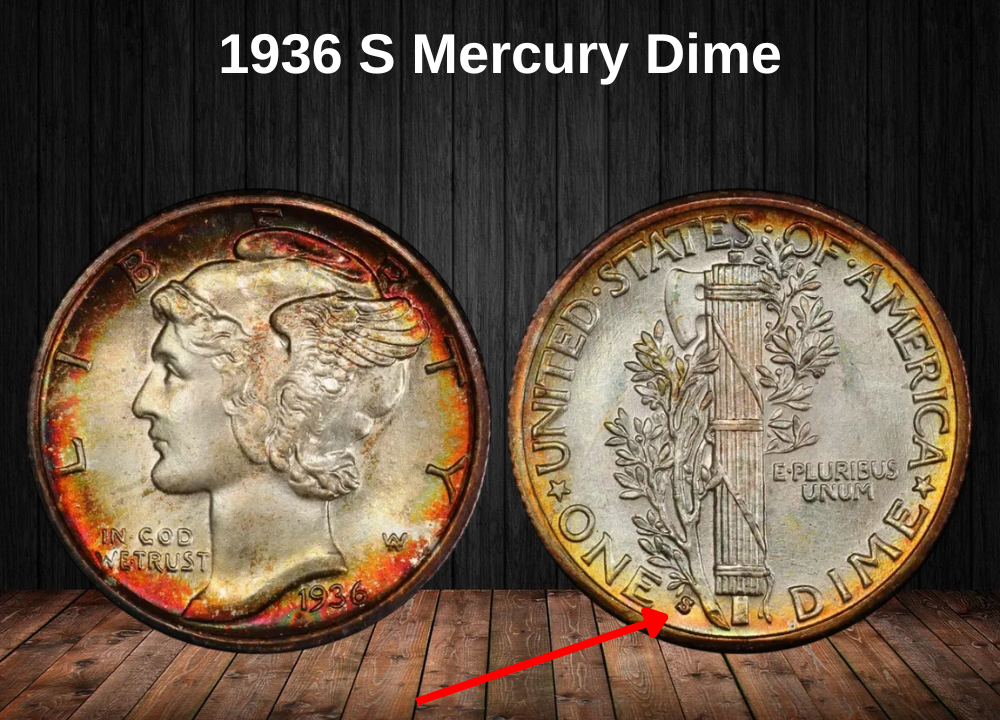
The San Francisco Mint struck the fewest coins this year, with 9,210,000 dimes.
- Circulated examples start at $3.20.
- Mint State prices include:
- MS60 → $30
- MS61 → $32
- MS62 → $35
- MS63 → $40
- MS64 → $50
- MS65 → $60
- MS66 → $100
- MS67 → $250
- MS68 → $22,500
Full Bands varieties raise the stakes:
- MS61 FB → $40
- MS62 FB → $50
- MS63 FB → $60
- MS64 FB → $105
- MS65 FB → $175
- MS66 FB → $250
- MS67 FB → $700
- MS68 FB → $22,500
Rare 1936 Mercury Dime Error List
Mint errors are among the most exciting aspects of coin collecting, and the 1936 Mercury Dime is no exception. Imperfections that occurred during the minting process often increase a coin’s value, making these dimes especially desirable for error collectors. Below are the most notable 1936 Mercury Dime errors.
Double Die Obverse
A double die obverse (DDO) occurs when the die strikes the coin more than once in a slightly different position. This results in doubled images on the date, lettering, and sometimes Liberty’s profile.
- Example sales:
- MS64 DDO sold for $129 (2012)
- MS67 Full Bands DDO sold for $1,795 (2018)
These errors are highly collectible, with values depending on grade and strike quality.
Die Clash
A die clash happens when the obverse and reverse dies strike each other without a planchet in between. The result is a faint outline of the opposite design appearing on the coin’s surface.
- On 1936 Mercury Dimes, clashed dies are relatively common.
- Value varies, usually higher for well-defined clashes, often in the $50–$150 range.
Planchet Errors
Planchet errors occur when the blank metal used to strike the coin is flawed. Common examples include clipped planchets or lamination cracks, where parts of the metal flake off.
- These errors are scarce in 1936 dimes.
- Value can range from a few hundred dollars to $1,000+ for dramatic examples.
Broad Struck
A broad strike occurs when the retaining collar — which holds the coin in place during striking — fails. This produces coins that are wider, thinner, and often irregularly shaped.
- 1936 broad-struck Mercury Dimes are collectible curiosities.
- Values typically range from $25 to $100, depending on severity and condition.
Where to Sell Your Dime Coin?
Now that you know the value of your dime, the next step is deciding where to sell it. There are several trusted options—both online and in person—that can help you get the best price depending on your coin’s rarity and condition.
To see the full list of recommended places, along with their advantages and disadvantages, check our complete guide on where to sell your dime coins.
FAQ about the 1936 Mercury Dime Value
What makes the 1936 Mercury Dime more valuable than its face value?
The 1936 Mercury Dime is composed of 90% silver and 10% copper, giving it an intrinsic melt value that is higher than its face value of 10 cents. Beyond silver content, collectors value these coins for their historical significance, artistic design, and rarity in high grades or with Full Bands details.
Why are Full Bands (FB) 1936 Mercury Dimes so desirable?
Full Bands dimes show sharp, fully separated horizontal lines on the fasces located on the reverse. This level of strike detail is rare because most dimes of the era were weakly struck. As a result, Full Bands coins are significantly more expensive, with some high-grade examples selling for thousands of dollars.
How does the mint mark affect the value of a 1936 Mercury Dime?
The 1936 dimes were struck at three mints: Philadelphia (no mint mark), Denver (D), and San Francisco (S). The San Francisco issue had the lowest mintage (9.2 million) and often carries a premium in higher grades. Denver dimes are known for their scarcity in Full Bands condition, which makes them highly collectible.
What is the value of a 1936 Proof Mercury Dime?
The Philadelphia Mint produced only 4,130 proof dimes in 1936, making them extremely rare. Depending on grade, values range from $725 (PR60) to $37,500 (PR68). Their mirror-like surfaces and rarity make them among the most coveted Mercury Dimes.
How do coin grading levels impact the 1936 Mercury Dime’s price?
Grading plays a crucial role in determining value. A circulated 1936 dime might be worth only a few dollars, while an uncirculated MS67+ Full Bands specimen can command thousands. Subtle differences, like luster, strike sharpness, and the presence of bag marks, can greatly impact a coin’s grade and market value.
What kinds of mint errors are found in the 1936 Mercury Dime?
Common errors include double die obverse, die clashes, clipped planchets, and broad strikes. These imperfections often raise a dime’s value substantially, with dramatic errors fetching hundreds or even thousands of dollars at auction.
Is the 1936 Mercury Dime a good long-term investment?
Yes, particularly in high-grade, Full Bands, or proof examples. While lower-grade dimes track closely with silver prices, rare high-grade specimens consistently appreciate due to limited supply and collector demand. Their historical context and artistic design also ensure long-lasting desirability in the numismatic market.

